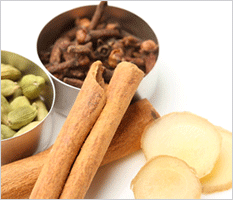Kampo is a Japanese traditional medicine with unique theories and therapeutic methods originally based on traditional Chinese medicine. The underlying idea of Kampo is that the human body and mind are inseparable and a balance of physical and mental is essential for human health. Kampo is a valuable mine of information about the nature of the human body and wisdom for healthy life. Today, as research of Kampo medicine and its theories with unique, holistic and practical approaches to clinical therapies continuously advances, Kampo is being reevaluated for its prospects for a much greater contribution to modern medicine. Today in Japan Kampo finds wide application not only in the fields of medical treatment and preventive medicine as an alternative to modern western medicine but also for daily healthcare and fitness regimens.
What are Kampo medicines?

Kampo medicines are herbal drugs made from natural ingredients of plant, animal, and mineral origin that are prepared according to classical Kampo theories. Kampo uses many familiar materials as medicinal ingredients; for example, "Keihi", commonly known as cinnamon, and "Borei", which is oyster shell. Several natural ingredients are mixed according to traditional formulae to draw out a synergistic effect from each other. In Japan today, Kampo drugs for medical use are prescribed by licensed medical doctors while some are available at pharmacies and drug stores without prescriptions.
History of Kampo in Japan
Kampo originally came to Japan from China in the fifth to sixth century. Based upon this traditional Chinese medicine, Japan has developed and systematized its own unique medicine through a long empirical tradition of study.
The name "Kampo" first came into use in the latter half of the sixteenth century to distinguish traditional medicine from newly acquired western medicine. Kampo means the medicine transmitted from Kan (the Chinese Han dynasty), while western medicine was called Rampo (medicine from Holland). Kampo was the mainstream of Japanese medicine at that time.
In the latter half of the nineteenth Century, Japan's government developed a new medical system centering on western medicine. As a result, Kampo fell into decline and it disappeared from center stage and was all but forgotten for a period of time. Nevertheless, its tradition survived and eventually interest in Kampo was renewed. Though there had been great advances in western medicine it was not a panacea for all illness and accordingly Kampo gained popularity as an effective complementary and alternative medicine. In 1967 Kampo extract medicines were included under public insurance coverage for the first time in Japan, triggering new progress in Kampo and its application in the framework of modern medicine. Since then Kampo medicines have become widely used for clinical therapies. Today they are not only used in primary care for common colds and other minor ailments but also as cutting-edge medicines for cancers, etc.
Production of Kampo
Traditionally, Kampo medicines are prepared by blending cut natural herbs and boiling them in water to infuse them. The resulting decoctions have distinct tastes and flavors. Today in Japan the traditional method of preparation is still practiced, but more widely used are ready-to-take Kampo extract granules or tablets produced from herbal extracts in pharmaceutical factories.
The production system for these Kampo medicines is supported by techniques of the highest level in the world, enabling stable supply of quality Kampo medicines with high concentrations of herbal extracts, while precisely following the authentic recipes in classical prescriptions.
Today Kampo medicines are available in a wide range of formulations such as fine granules, powders, tablets, capsules, and solutions, just like modern western medicines. These extract medicines, unlike old-style Kampo crude herb mixtures, are easy to carry around, can be taken anytime anywhere, and have a good shelf life.
Kampo now used together with western medicine
Western medicine focuses on individual organs or parts of the body. It seeks to target the sick parts of the body to identify and remove the cause of a sickness. The effect is direct and sharp. Today many diseases have become curable with this style of medicine and new discoveries continue to be made. Yet as powerful as western medicine is, it is not versatile enough to cure all types of sickness and there are limits to what it alone can do. Additionally, western medicine is known to produce many adverse side effects and sometimes cannot give patients relief when the exact source of a symptom cannot be identified.
In contrast, Kampo employs a symptom-oriented, holistic approach. It does not just focus on the condition of diseased parts but checks the condition of the entire body and mind. Then it seeks to produce a proper balance of all organ systems to recover health in patients. The effect is weaker and slower compared to western medicine, but Kampo is better in alleviating the symptoms suffered by patients. Accordingly, Kampo has attained a high level of patient satisfaction.
In Japan today, based on a deepened understanding of their respective strengths, western medicine and Kampo are being used together in clinical treatment, where the most effective ways to combine their advantages are being explored. This "combination" therapy has contributed to enhanced patient quality of life.
Kampo medicines have taken firm root in Japan and currently more than eighty percent of doctors prescribe Kampo medicines, which are also widely available at pharmacies and drugstores.
Kampo for further development of medicine
In Japan, Kampo medicines both for clinical use and over-the-counter sales are contributing to public health and are expected to evolve even further. Currently, Japan is the only country where clinical doctors are permitted to prescribe both western types of medicines and Kampo medicines at the same time and where both are covered by the same public insurance system. Therefore the application of Kampo medicines and their contribution to clinical treatments in Japan are very worthy of attention, to fully appreciate the great future potential of Kampo for opening a new path for modern medicine.










